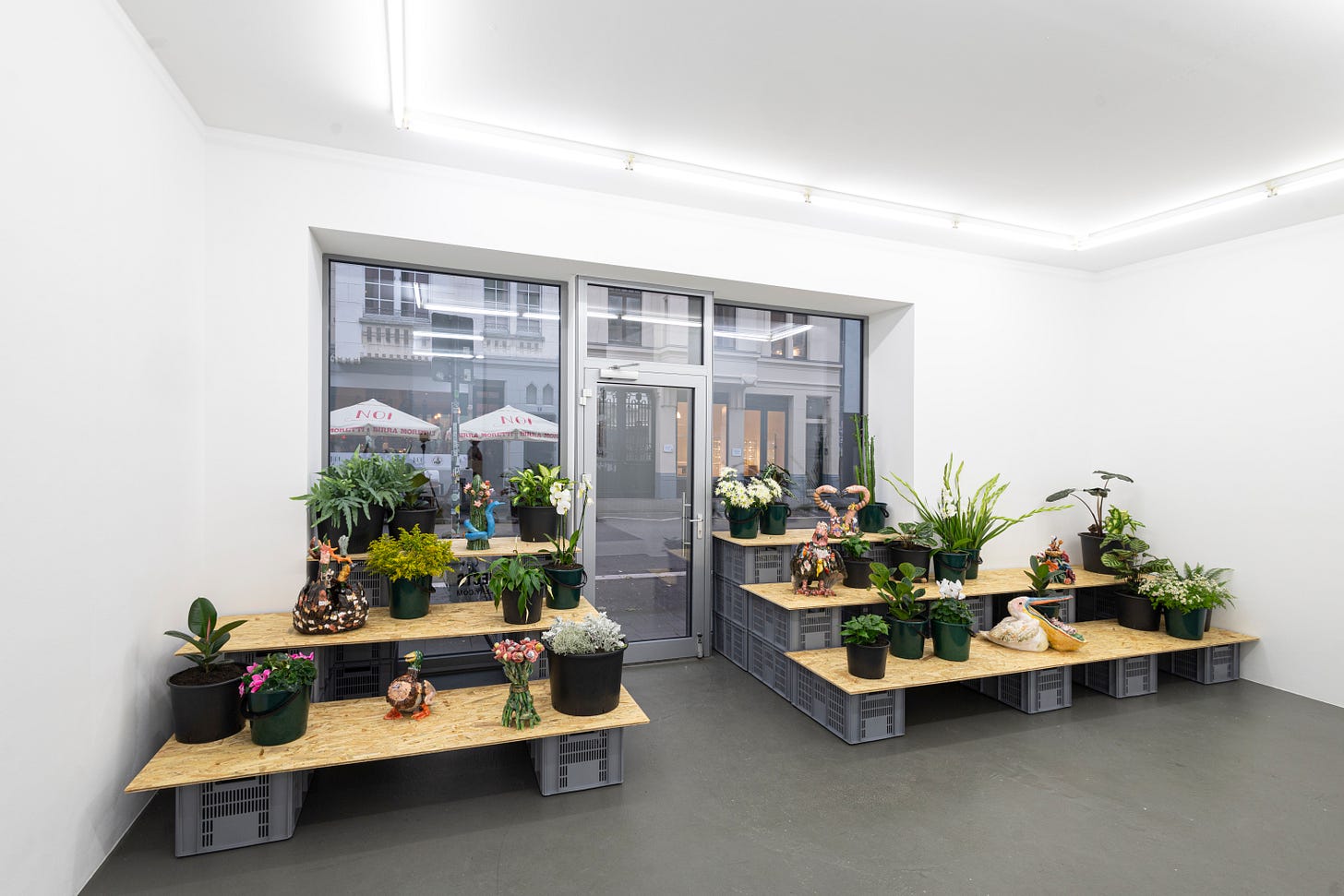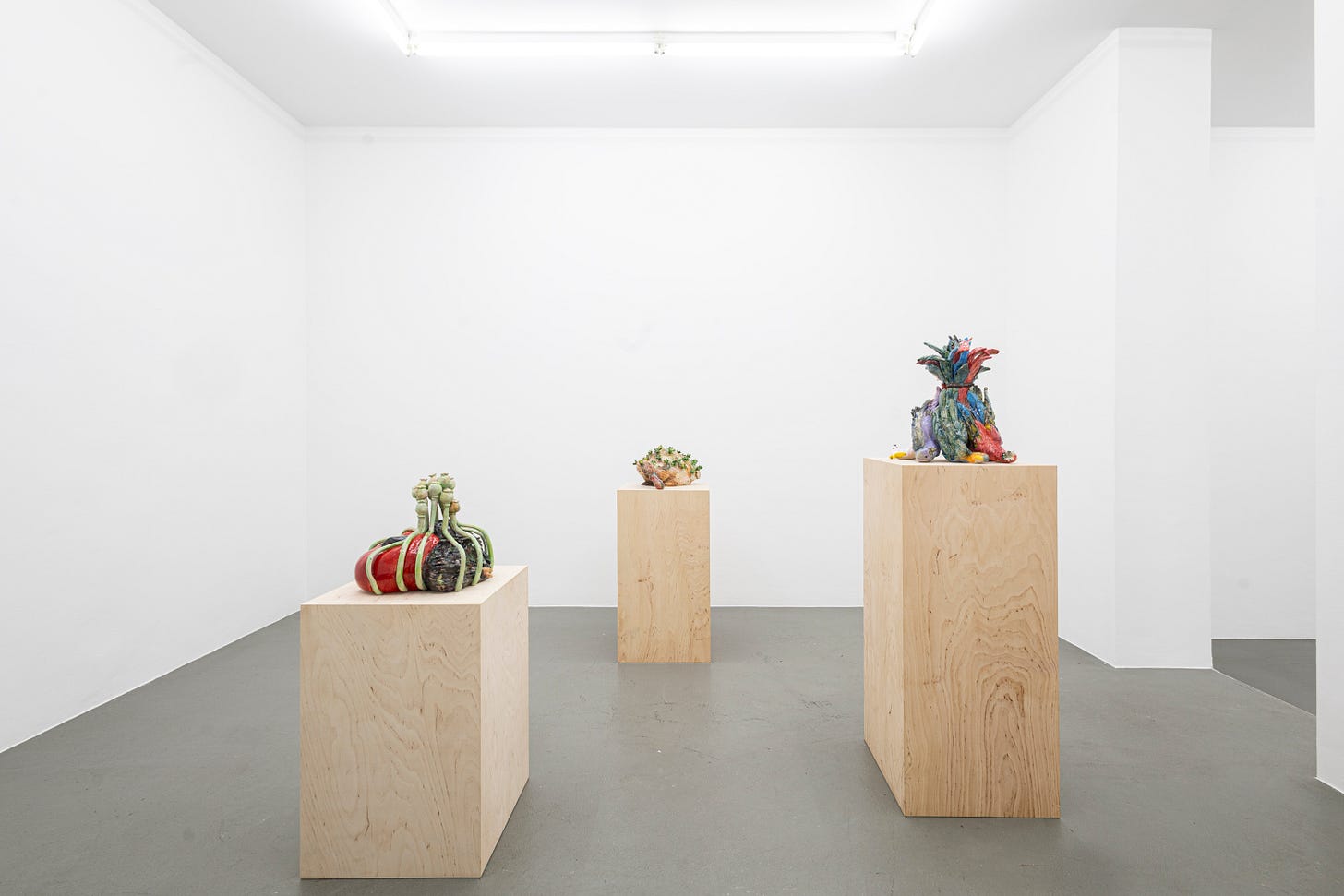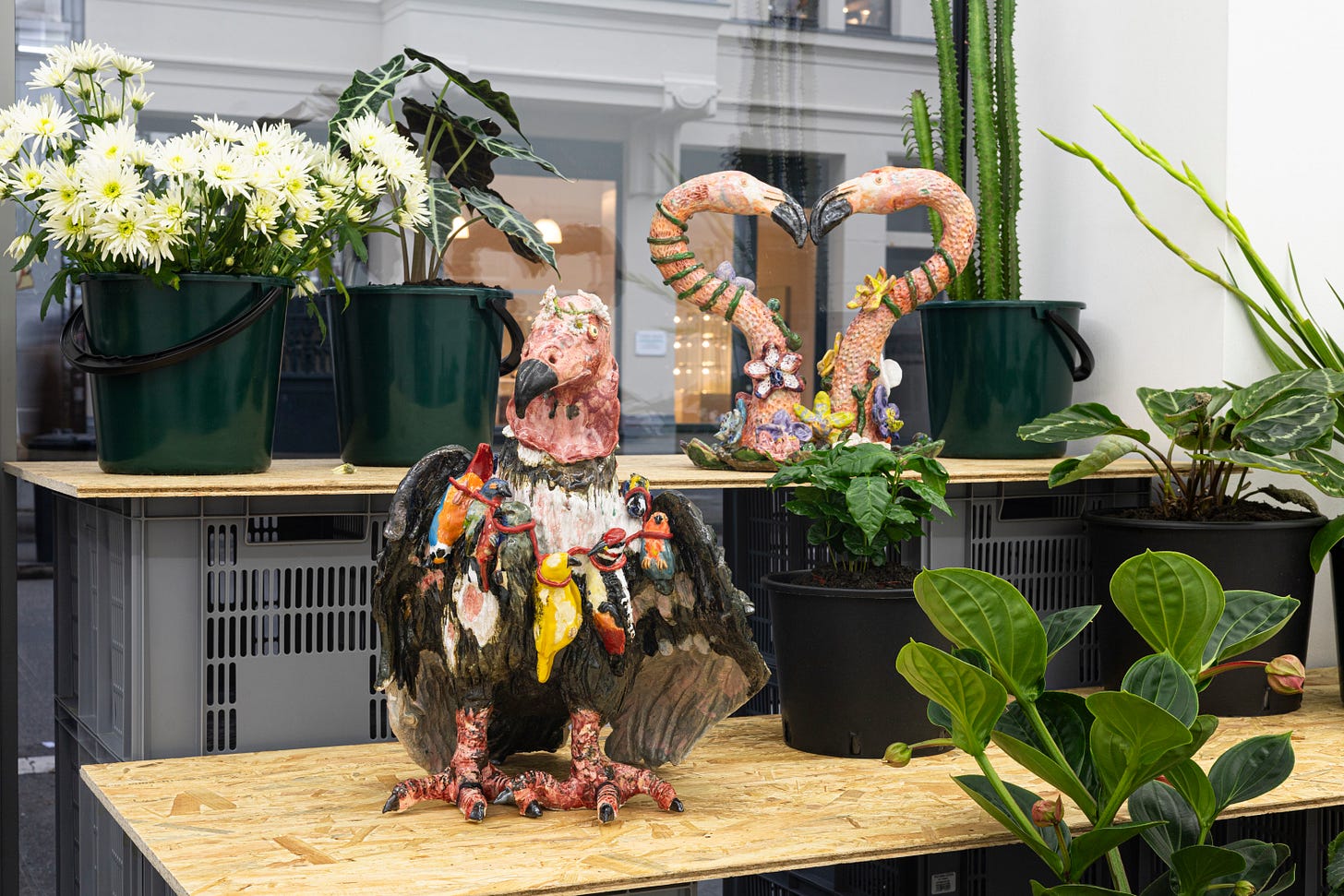3 Shows in Cologne: Ceramic Creeps, Layered Abstraction & Bra Collages
Come along to the gallery shows at kjubh, Jan Kaps, and Gaa Gallery.
Kresiah Mukwazhi: Gupuro
From a distance, Kresiah’s (Millennial, Zimbabwean) works look like abstract paintings. She creates gradients through horizontal lines, making me think of the Minimal Art icon Kenneth Noland (1924-2010, US-American). But these aren’t paintings. Kresiah attaches fabric strips to canvases. And not just any type of fabric: She’s going for bra straps.
Not only am I thinking of mid-century Minimal Art but tapestry as well. I’m imagining the weaving loom on which these horizontal patterns are made. But as I said, it’s all bra straps. Industrially produced, there’s nothing handmade about them.
Kresiah went for the most overlooked part of a garment made for female-read bodies. Bra straps are meant to support yet be invisible. It’s embarrassing when they peak out at the shoulder or when the clasps press through the shirt fabric, announcing to everyone around that you are, in fact, wearing a bra, in case anyone didn’t notice.
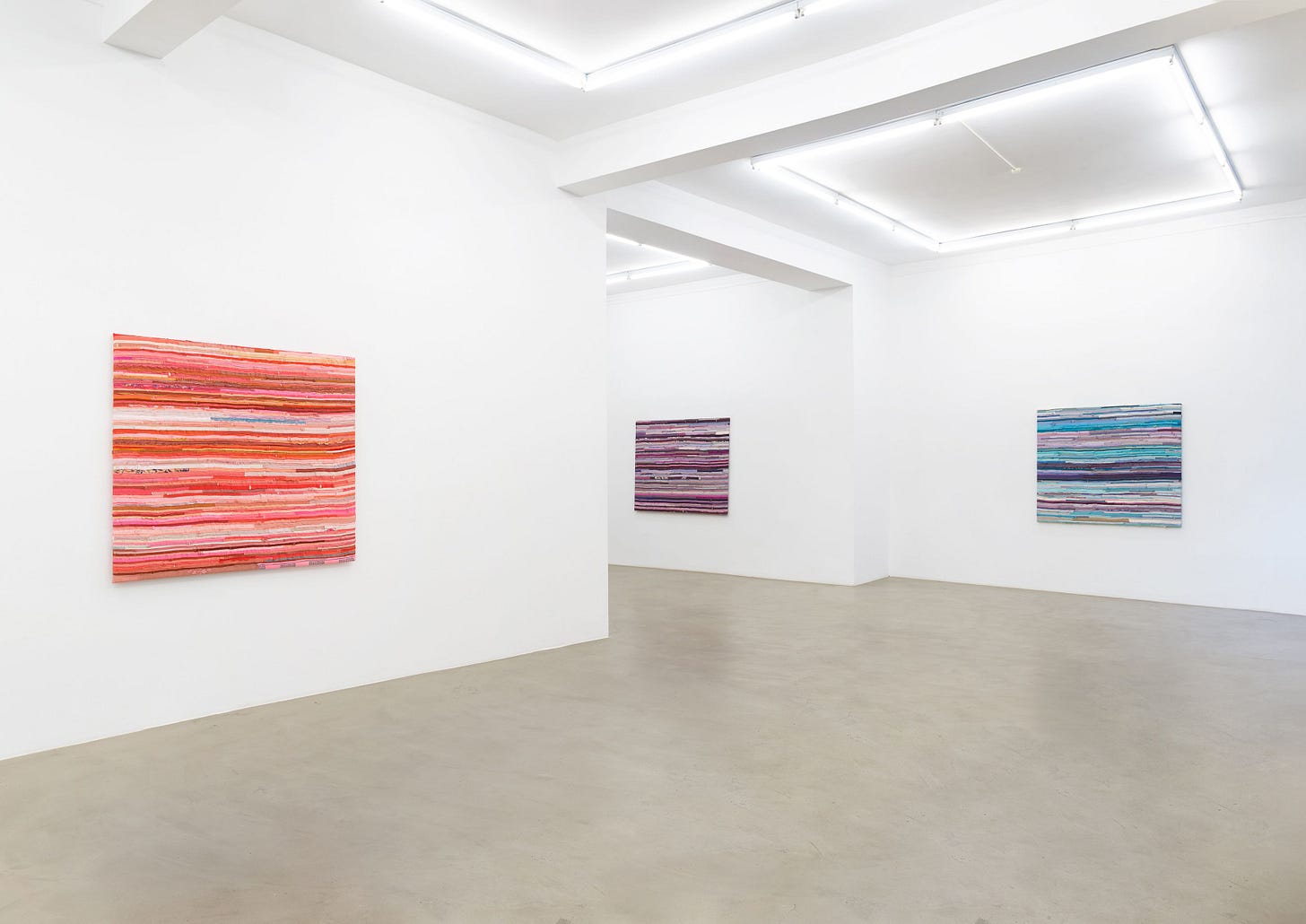
So she puts these little straps on display. Full on. There’s a certain uniformity at first glance. But then I notice variations in width and texture: a frill, some lace, some dots, stripes, a floral print, a brand logo in between. In ziph‘inkomo? (No cows for the bride?) (2024), Kresiah sneaks in a strap with the Victoria’s Secret logo, collaging it into the darkness. If anybody finds out what that damn secret is, let me know.
Going back to Minimal Art, Kresiah’s approach is the ultimate fuck you. Referencing an era dominated by fragile male egos and their need to compensate through big big manly canvases, she does a Zoolander (2001) and goes you know what? You’re excused. But I’m not your bra.
At least that’s how I understood this part of the exhibition. But the second part throws this whole interpretation through the window: Kresiah wallpapered two rooms with glaring pink fur. I previously only knew her bra-collages, so I thought What in the Regina George is this? In the center: Cryptic, partly abstract, partly figurative paint collages of what looks like female bodies. She gave the floor a pink makeover, too, adding pebbles on top. I was caught off guard. I was confused. Bamboozled, even. How could I make sense of this?
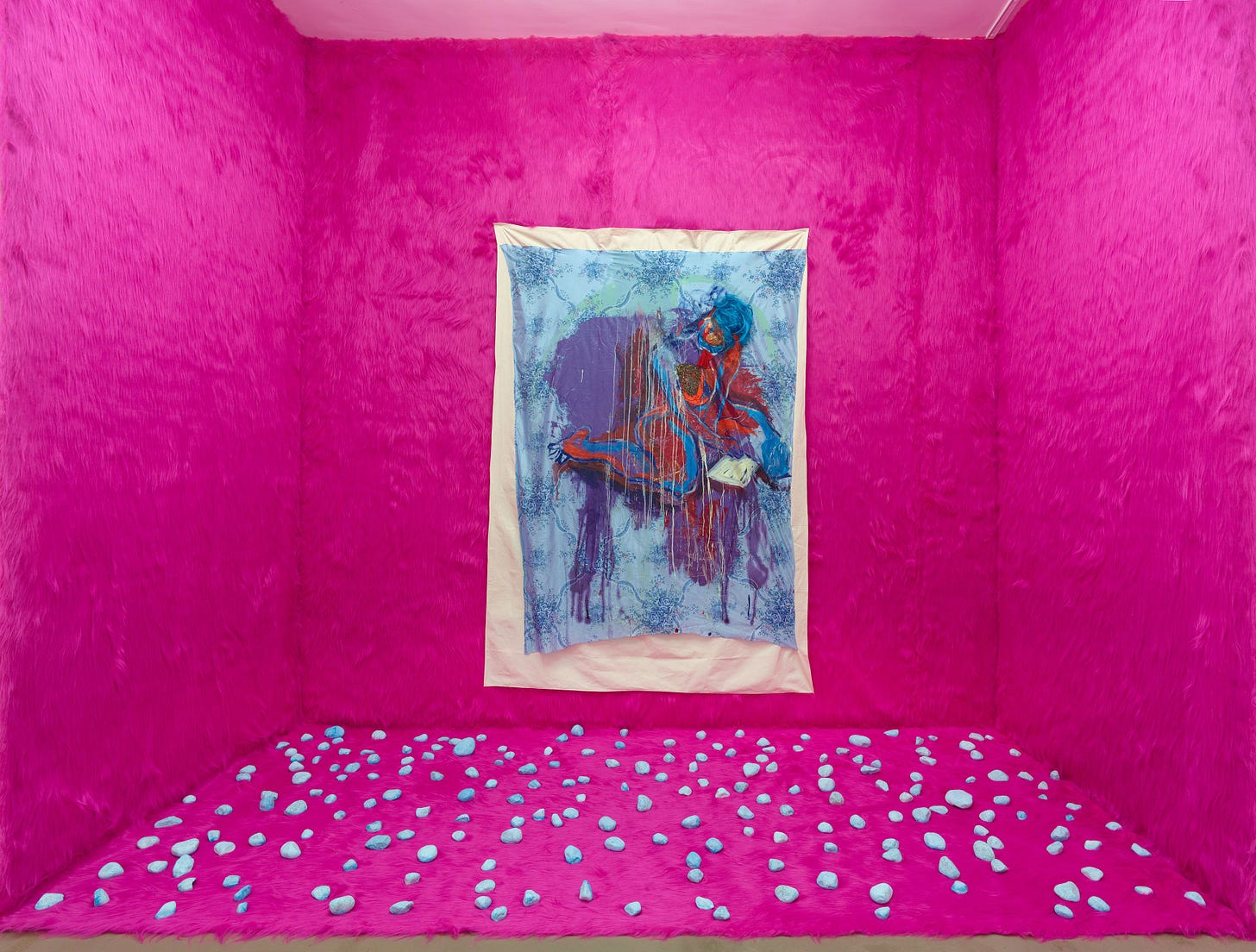
That’s where we get to the exhibition title. I read in the press release:
In the culture of the Shona, the largest ethnic group in Zimbabwe, the Gupuro is a symbolic act that formally ends a marriage or partnership: A token of separation is presented to signal the release from the marriage. […] Beyond a formal divorce or separation, Gupuro is seen as a spiritual release, a way of severing spiritual ties and obligations that have arisen during their time together.
So Kresiah is giving us divorce, babe, divorce. I couldn’t find out what the token in question usually is. It’s not the pebbles, though, because those were (?) used in “Indian culture […] by women to pay their dowry and on which images of flamingo birds in a paradisiacal forest were printed”, the press release states. And the pink fur is apparently an abstract nod to the flamingo. But now I’m wondering, why the connection between Indian and Shona marriage practices? And where do the bra-collages fit in? I guess I can’t give you an answer on that today.
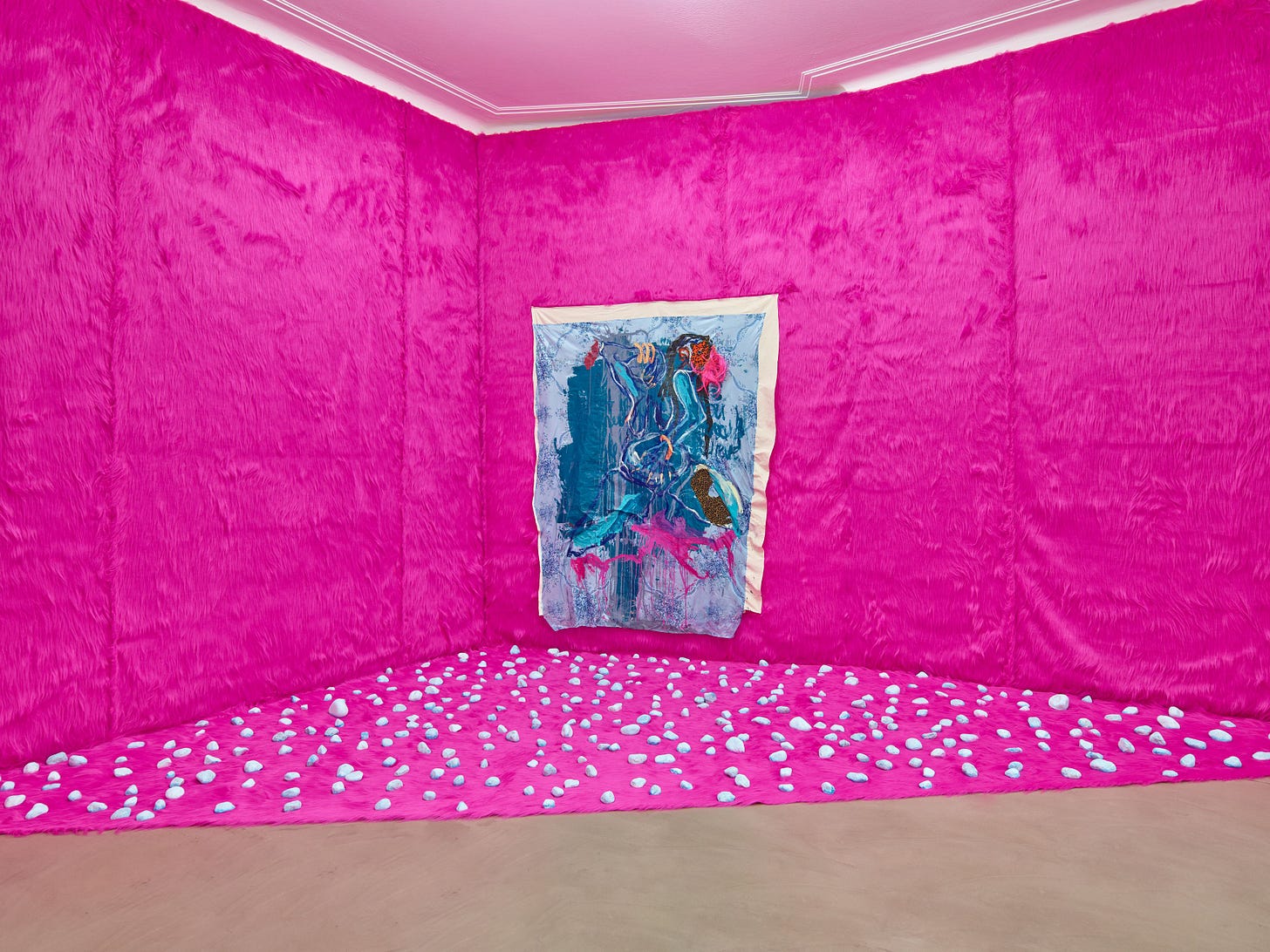
Jan Kaps, through January 25, 2025. Lindenstrasse 20, 50674 Cologne
Anna Virnich: Fertilizer
I’ve always been a fan of any variation of a translucent canvas situation so Anna (Millennial, German) had me at hello. In her newest body of work, she stretches fabrics over wooden frames. It’s hard to tell what these shreds once were. Clothes or curtains? Scarves or bedsheets? Sometimes, a clothing tag like Made in England is the only clue. Previously, Anna has often used patterned pieces and varying textures. This time, she mostly goes for (visually) simpler fabrics.
From a distance, these works look like abstract paintings. Only when you come closer do they reveal their true material. There are layers, but not in a physical way. Pressed together, these flattened fabrics remind me of flowers and leaves in a herbarium.
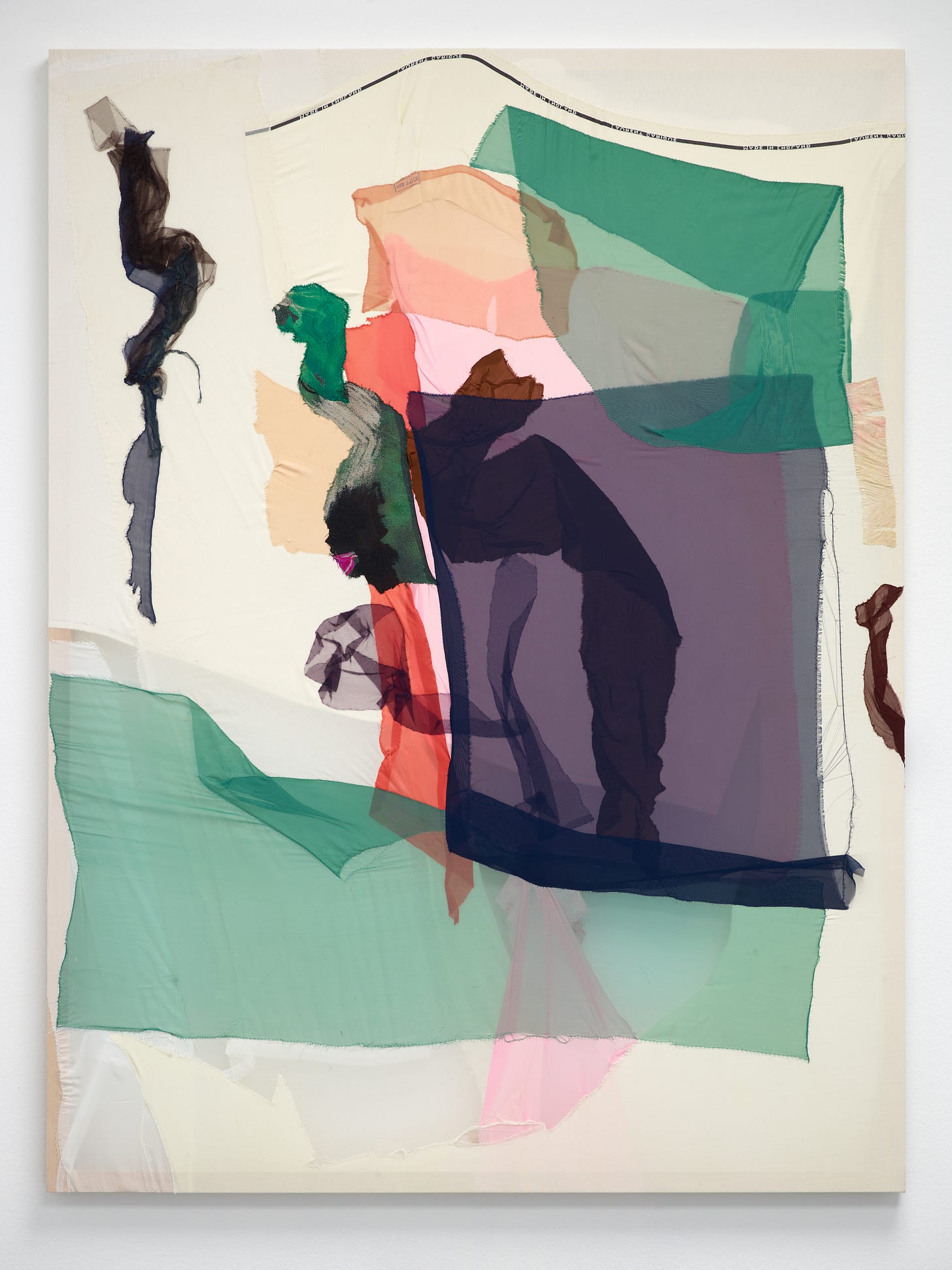
Rather than being purely physical, the layers bring out a deeper dimension of color. Even though Anna stretches the shreds, they don’t turn out perfectly smooth. She keeps overlapping folds, which then saturate the colors: With the same cloth, Anna can bring out a minty and a fir green, or a night blue and aubergine, using nothing but the arrangement.
Anna really is painting with fabrics. That’s why some of the torn threads and seams look like delicate drawings to me. And the fringes of another piece make me think of leaking watercolor. Speaking of leaks, the press release drew a connection to Helen Frankenthaler’s (1928-2011, US-American) soak-stain paintings. How didn’t I see it right away? I mean: The color palette in Fertilized I (2024)? Or Fertilized II (2024) giving color field painting? Now that I think about it, am I tripping or is there a slight Clyfford Still (1904-1980, US-American) vibe?
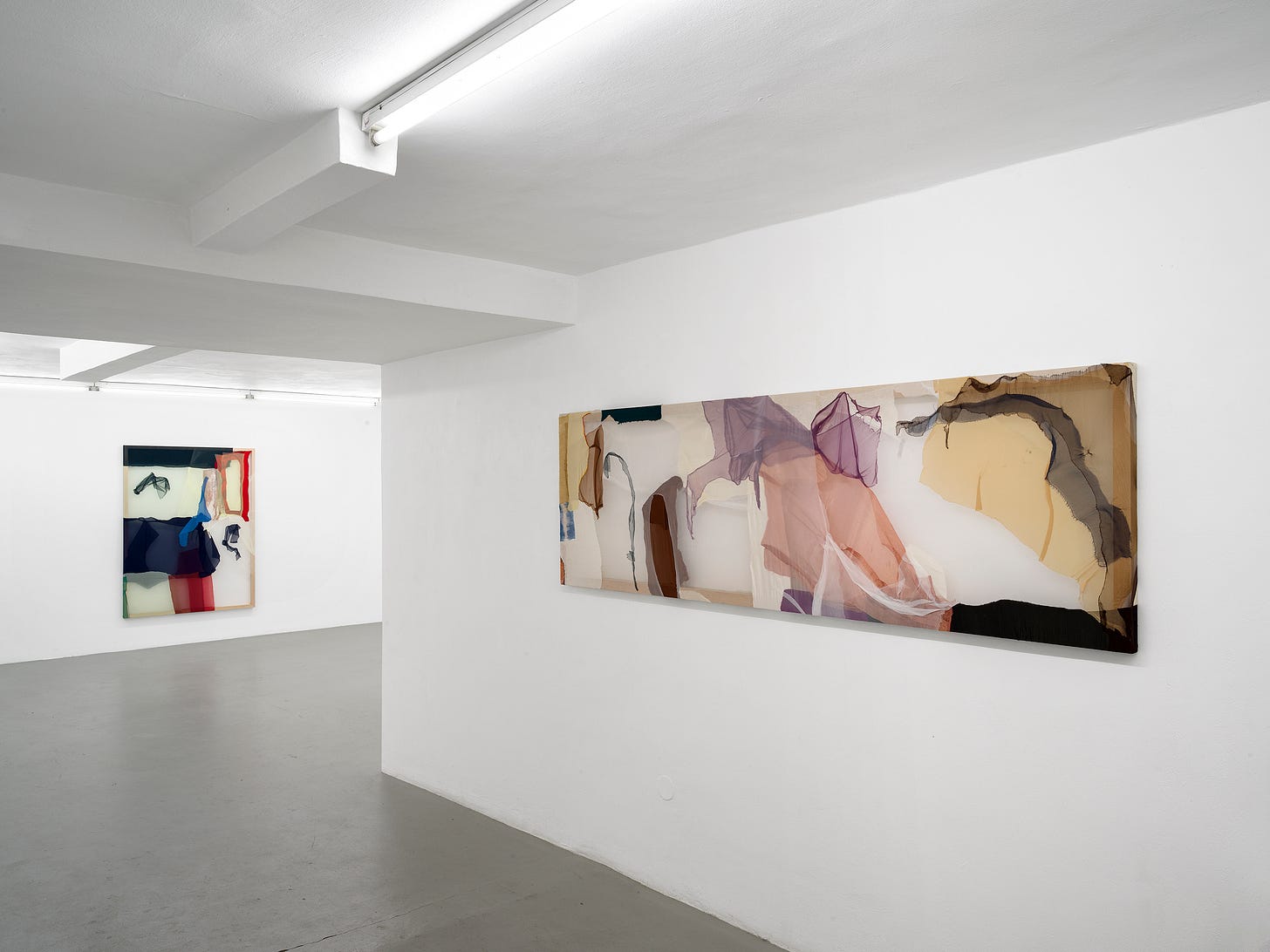
kjubh Kunstverein e.V., on view from November 8 to November 30, 2024. Dasselstrasse 75, 50674 Cologne
Dominika Bednarsky: Clay Pigeons
Walking by, I first mistook the gallery for a new flower shop. Dominika (Millennial, German) turned the space into a NY deli, transport boxes and wooden planks replacing the usually sterile and minimalist columns reserved for sculptural works. In between potted plants, she arranged eight works from her new Clay Pigeons series.
Each piece is an entanglement of birds and plants. At first glance, these roughly worked ceramics look like granny’s kitsch. A closer look reveals how humorous these pieces are. And lowkey brutal.
A vulture put on a curious look, slightly tilting its flower-crown-adorned head. This fella doesn’t necessarily look like it killed the lil canaries tied to its neck. What an…interesting accessory…I guess. But hey, survival of the fittest and shit. Dead parrots are tied together at their tails. Reminds me of Flemish 17th-century still-life paintings displaying the lavish booty (hehe, booty) brought back from the hunt. I hope our green parrots in Cologne are safe…
Who’s hunting whom, though? The stems of a plant turn into a prison cell a frigatebird succumbs to. Actually, I’m surprised to not see any iterations on flesh-eating plants. Two flamingos forming a heart with their necks are slowly but surely getting suffocated by orchids. Girlypop, you’re not gonna look me dead in the eye and tell me that this is NOT a reference to the garden flamingo Featherstone reuniting with the lost love of his life at the end of the Gnomeo & Juliet (2011) movie. Elton John did not produce that fire soundtrack for you to deny it.
We’re keeping it Bri’ish with a grinning duck: It got dandelions tattooed on its chest and another leaf on its wing. Together with the sharp teeth? Now that’s a Brexit Geezer looking for some banter.
These lil fellas don’t get pet names. Nor is Dominika going for botanical terms. All pieces are titled Clay Pigeons: Birdbouquet with a Roman numeral following. What is this bird bouquet even? It turns the practice of gift-giving upside down. Cutting flowers is so normal that we don’t think much about it. People look at a living organism connected to the soil and go oh that’s pretty. Let me amputate it! And then they keep the chopped organism in a glass container, waiting for it to rot. If we weren’t talking about flowers, we’d think that’s some fucked up shit to do, wouldn’t we? Dominika reverses the roles of birds and flowers in her arrangements, turning the flowers into predators and the birds into prey. How the Darwinistic turns have tabled.
As I left the gallery to get myself a snack for my next stop, I saw a real pigeon lying on the other side of the street: Its neck was broken. And that’s on the “harmony of nature”…
Gaa Gallery, through January 11, 2025. Antwerpener Strasse 4, 50672 Cologne
Subscribe to stay up to date on gallery shows in Cologne!
I love my native Cologne. Always happy to see what’s new in the scene. What do you think of this selection? As a subscriber, you can like my posts and leave me comments. In any case, feel free to share with someone who might want to do a gallery tour on their own!
See you soon!!!
Jennifer
The Gen Z Art Critic





